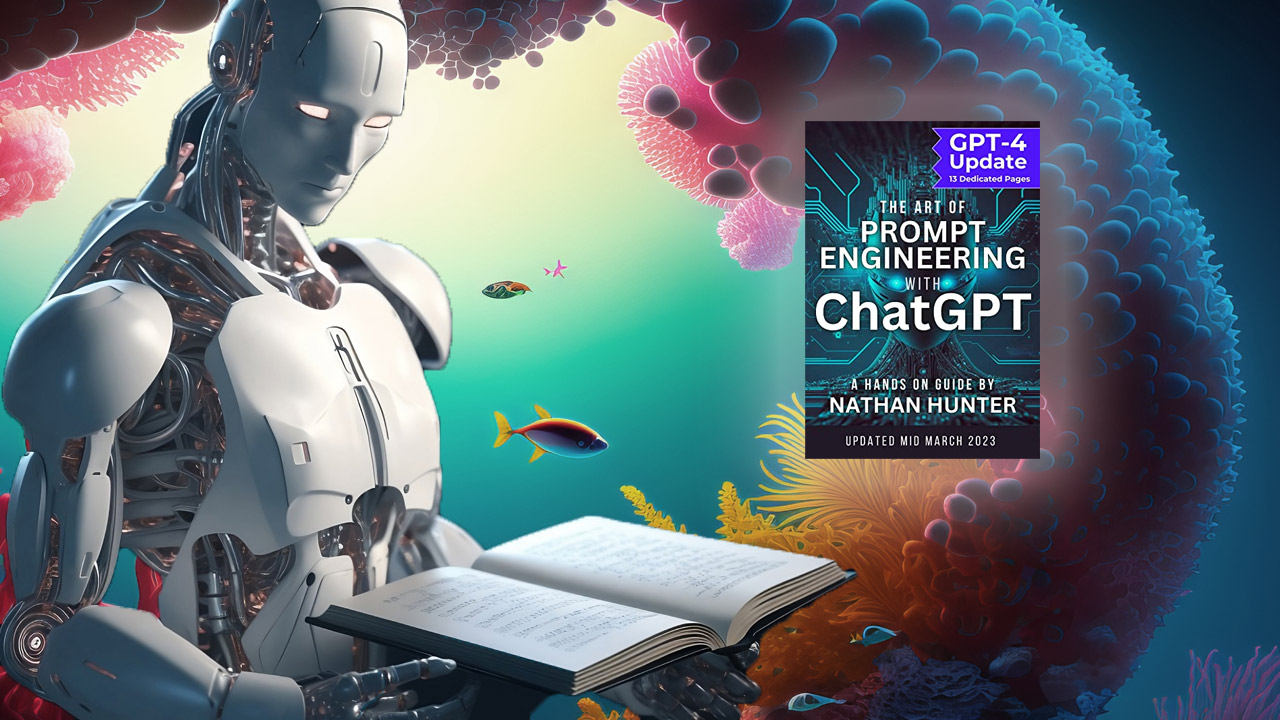Book Summary
The book is a hands-on guide for using ChatGPT, an AI language model, for prompt engineering. The author provides practical advice on how to fine-tune the model for specific tasks and how to generate high-quality responses.
Title, Author: The Art of Prompt Engineering with ChatGPT by Nathan Hunter
Key Ideas or Arguments Presented
- Prompt engineering is the process of designing prompts that elicit the desired response from a language model.
- Fine-tuning is the process of training a pre-trained language model on a specific task.
- The quality of the generated responses depends on the quality of the prompts and the fine-tuning process.
- To generate high-quality responses, the author recommends using diverse and representative data for fine-tuning and evaluating the model’s performance.
Chapter titles or main sections of the book with a paragraph on each
- Introduction: The author introduces the topic of prompt engineering and explains the purpose of the book.
- ChatGPT Overview: The author provides an overview of ChatGPT and its capabilities, including the different pre-trained models and their specifications.
- Prompt Engineering: The author explains the process of prompt engineering and provides practical advice on how to design effective prompts.
- Fine-tuning: The author explains the process of fine-tuning and provides guidance on how to fine-tune ChatGPT for specific tasks.
- Evaluation: The author explains how to evaluate the performance of a fine-tuned model and provides tools and metrics for measuring performance.
- Applications: The author provides examples of different applications of ChatGPT, such as chatbots, question-answering systems, and language translation.
- Conclusion: The author summarizes the main points of the book and provides recommendations for further reading.
Key takeaways or conclusions
- Prompt engineering is a critical step in generating high-quality responses from language models.
- Fine-tuning is essential for adapting pre-trained language models to specific tasks.
- Using diverse and representative data for fine-tuning and evaluation is crucial for achieving high performance.
- ChatGPT has many potential applications in natural language processing, including chatbots, question-answering systems, and language translation.
Author’s background and qualifications
Nathan Hunter is a data scientist and machine learning engineer with expertise in natural language processing. He has worked on various projects, including chatbots, language translation, and sentiment analysis.
Comparison to other books on the same subject
The book provides a practical, hands-on approach to prompt engineering and fine-tuning language models. It is suitable for readers with some background in natural language processing and machine learning. Compared to other books on the same subject, it is more focused on practical advice and examples.
Target audience or intended readership
The book is intended for data scientists, machine learning engineers, and researchers who want to use ChatGPT for natural language processing tasks.
Reception or critical response to the book
The book has received positive reviews for its practical advice and clear writing style. Readers have appreciated the hands-on approach and the examples provided.
Publisher and First Published Date
The book was published by Packt Publishing in 2021.
Recommendations (Other Similar Books on the Same Topic)
- (Amazon) “Hands-On Natural Language Processing with TensorFlow” by Rajesh Arumugam
- (Amazon) “Applied Natural Language Processing with Python” by Taweh Beysolow II
- (Amazon) “Natural Language Processing with PyTorch” by Delip Rao and Brian McMahon
Where to buy
Final Thoughts
The biggest takeaway from “The Art of Prompt Engineering with ChatGPT” is that prompt engineering and fine-tuning are crucial for generating high-quality responses from language models, and ChatGPT has many potential applications in natural language processing.









